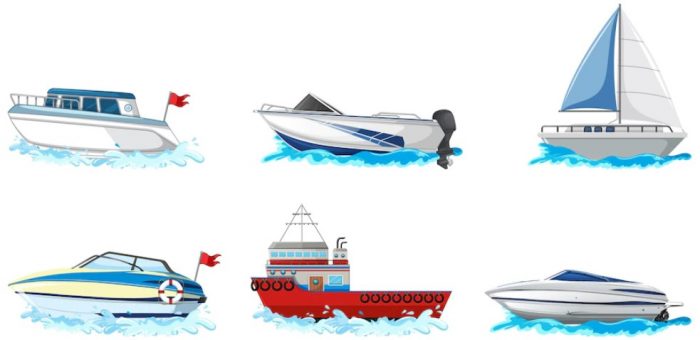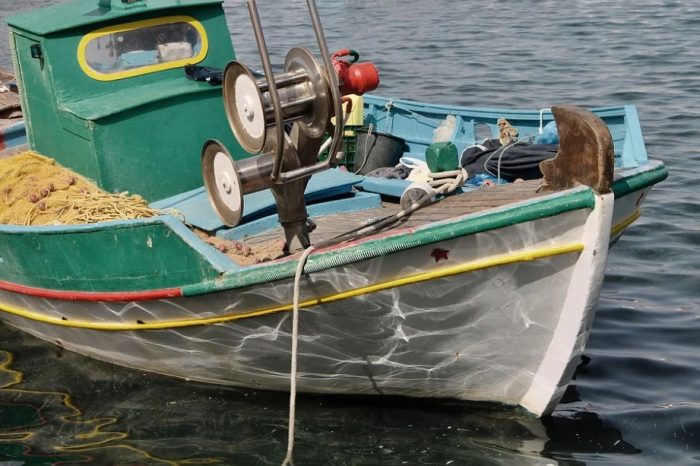The bottom of a boat is called the hull underside, but it is often referred to as the boat’s bottom. The underside is the part that comes into direct contact with the water and is divided into two parts. The front part is the bow, while the back part is known as the stern.
Key Takeaways
- The hull is the shell or body of the boat, and it includes different parts such as the bottom, sides, and deck
- The bow is the front part of the hull, which is always the most forward part of a boat when it’s moving
- A cabin can be the entire space below the deck with multiple rooms or just one room
- The keel is the bottommost part of the boat’s hull that runs through the middle of the boat
Parts of a boat

If you ever plan to sail on a water vessel like a ship or boat, you need to know the different parts of a boat and how they work. Knowing their nautical names comes in handy and will also help you get the most out of your experience.
Let’s learn the parts of a boat and what they do:
- Bow– the bow is the front part of the hull, which is always the most forward part of a boat when it’s moving.
- Stern -the rear part of the boat. When the ship moves backward, it is said to be moving astern.
- Deck – the deck is the horizontal structure covering the hull to strengthen it. It is the ship’s floor that acts as the primary working surface.
- Cabin- the cabin is situated below the deck, and it’s where people sleep and spend time. A cabin can be the entire space below the deck with multiple rooms or just one room.
- Gunwale- the gunwale is also referred to as the gunnel and is the upper edges along the side of a boat. It adds structure and strength to the boat’s overall design.
- Hatch – a hatch is an opening that connects the bottom of the boat to the deck
- Transom- this is the cross-section of the stern where an outboard motor is attached
- Cleats- cleats are metal fittings on the top of a boat where you fasten the cable or rope to dock your vessel
- Hull- the hull is the boat’s entire body, which includes the deck, bottom, and sides.
- Starboard – this is the right side of the boat from the front to the back of the vessel.
- Port– the port is the vessel’s left side running from the front of the boat to the back.
- Keel– the keel is the bottommost part of the boat’s hull that runs through the middle of the boat. The keel runs all the way from the front to the back and is one of the main structures on a vessel since it is the foundation. The keel provides strength and stability and keeps the boat from drifting sideways.
Other boating terminology
Now that we know the main parts of a boat, let’s look at other boating terminology that is important for anyone navigating water bodies using a boat.
- Beam- this is the boat’s width measured at the vessel’s widest point. Most times, the beam determines the stability of a ship in that the larger the shaft, the more stable the boat
- Draft– this is the distance from the keel to the waterline; the draft is a boat’s minimum water depth required for it to float
- Aft- the area leading to and around a boat’s stern
- Forward- the area leading to and around the boat bow
- Waterline- where the boat hull meets the surface of the water
- Freeboard- The distance between the gunwale and the waterline
After looking at the main parts of a boat and some of the most important boating terms, let’s look at the hull, different hull designs, and how the hull designs influence a boat’s movement.
Boat hulls: types, design, and uses

Boat hulls come in different sizes and shapes, and their primary purpose is to plane and float on water or displace it.
Larger and slow-moving boats have hulls that displace water due to their power and weight, and that’s why they move lower in the water.
Smaller and faster boats have planning hulls designed to ride on the water. There are four standard boat hulls, and each design is suited for a specific water body.
Flat-bottom hulls
The strong point of flat-bottomed hulls is their stability; such boats are very stable and ideal for small water bodies. They are mainly used for fishing because you can stand on them without fear of tipping over.
Multi-hulled vessels
Pontoon boats and catamarans are the most common multi-hulled boats. Depending on the boat’s engine and size, the hulls can either be displacement or planning type. The boats are very stable, but they require more space to turn and steer.
V-shaped hulls
These boat hulls are designed to plane on the water at high speeds giving a smooth ride through choppy water. The hull design help to break the surface tension of the water, making the boat achieve higher rates with ease.
Round-bottom hulls
Round bottom hulls are designed to move smoothly through the water with minimal effort. They are displacement hulls and are mostly found on canoes. One main downside of these hulls is that they are pretty unstable, and they can capsize if you are not careful when entering, exiting, or loading the boat.
Final word
As a recreational boater, you may not have time to take courses on boating. However, you need to be familiar with some common boating terminologies and learn the parts of a boat. This information will come in handy because you can communicate with other boaters effectively and take instructions with understanding.
Knowing the hull type on a boat is also important because you will know what the vessel is best suited for. It also helps to stay safer on the water as you will be aware of the dos and don’ts.
If you will be enjoying boat rides as a passenger, this basic information is enough for you. If you plan to operate a vessel, we recommend taking a course and getting your boating license. This way, you will know the rules and also understand how to stay safe and keep your passengers safe on the water. Let safety be your guiding principle when operating any vessel on the water.
References:
- https://www.quora.com/What-is-the-name-of-the-bottom-of-a-boat
- https://crowsurvival.com/what-is-the-bottom-of-a-boat-called/
- https://www.discoverboating.com/resources/parts-of-a-boat

Rockey is a kayaking enthusiast who has been kayaking with a local group for the last five years. He loves using kayaks while out on outings on the water or camping when the friends want to have a BBQ party somewhere on the bank of a local lake. More About James R Rockey at About Page Here: Authors
Based on his experiences with the different types of kayaks, he is sharing his opinion about kayaking tricks and required gears so that a beginner can get started right away.
Find his team on Twitter here. Happy reading!
